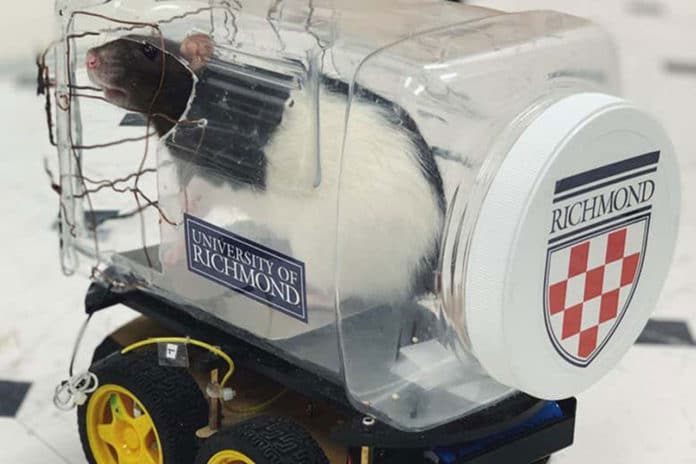Psychology professor Kelly Lambert and her team, including psych professor Laura Knouse, Apple data scientist Beth Crawford, and alum-turned-lab assistant Olivia Harding, ’19, are having a big week because of their research into rats. They taught the rats to drive a tiny car to pick up food. The findings suggest rats may possess a greater ability to learn tasks than previously thought.
The discovery highlights the fact of how adopting new skills mitigate stress and how neurological and psychiatric conditions influence mental capacities.
Almost six females and eleven male rats were trained. What’s more, they were rewarded with Froot Loop cereal pieces when they successfully moved the car forward.
Scientists primarily made a tiny car using a transparent plastic food container on wheels, with an aluminum floor and three copper bars functioning as a steering wheel. At the point when a rodent stood on the aluminum floor and gripped the copper bars with their paws, they completed an electrical circuit that pushed the car forward. Touching the left, center, or right bar steered the ar in various directions.
Kelly Lambert, at the University of Richmond in Virginia, said, “We know that rodents can learn to recognize objects, press bars, and find their way around mazes. These tests are often used to study how brain conditions affect cognitive function, but they only capture a narrow window of animal cognition.”
During the experiment, the rats required to drive the car in rectangular arenas up to 4 square meters in size. To make it happen, scientists placed the food rewards at increasingly distant points around the arena.
Doing this encouraged rats to advance their driving skills. “Surprisingly, rats navigated the car in unique ways and engaged in steering patterns they had never used to arrive at the reward eventually,” reported Lambert in New Scientist.
Scientists then observed rat’s mice by measuring levels of two hormones: corticosterone, a marker of stress, and dehydroepiandrosterone, which counteracts stress. They found that learning to drive relaxed the rats, and the ratio of dehydroepiandrosterone to corticosterone in the rats’ feces increased throughout their driving training.
Lambert noted, “The ability of rats to drive these cars demonstrates the “neuroplasticity” of their brains. This refers to their ability to respond flexibly to novel challenges. I do believe that rats are smarter than most people perceive them to be and that most animals are smarter in unique ways than we think.”
Scientists further planning to continue experiments to understand how rats learn to drive, why it seems to reduce stress and which brain areas are involved.
